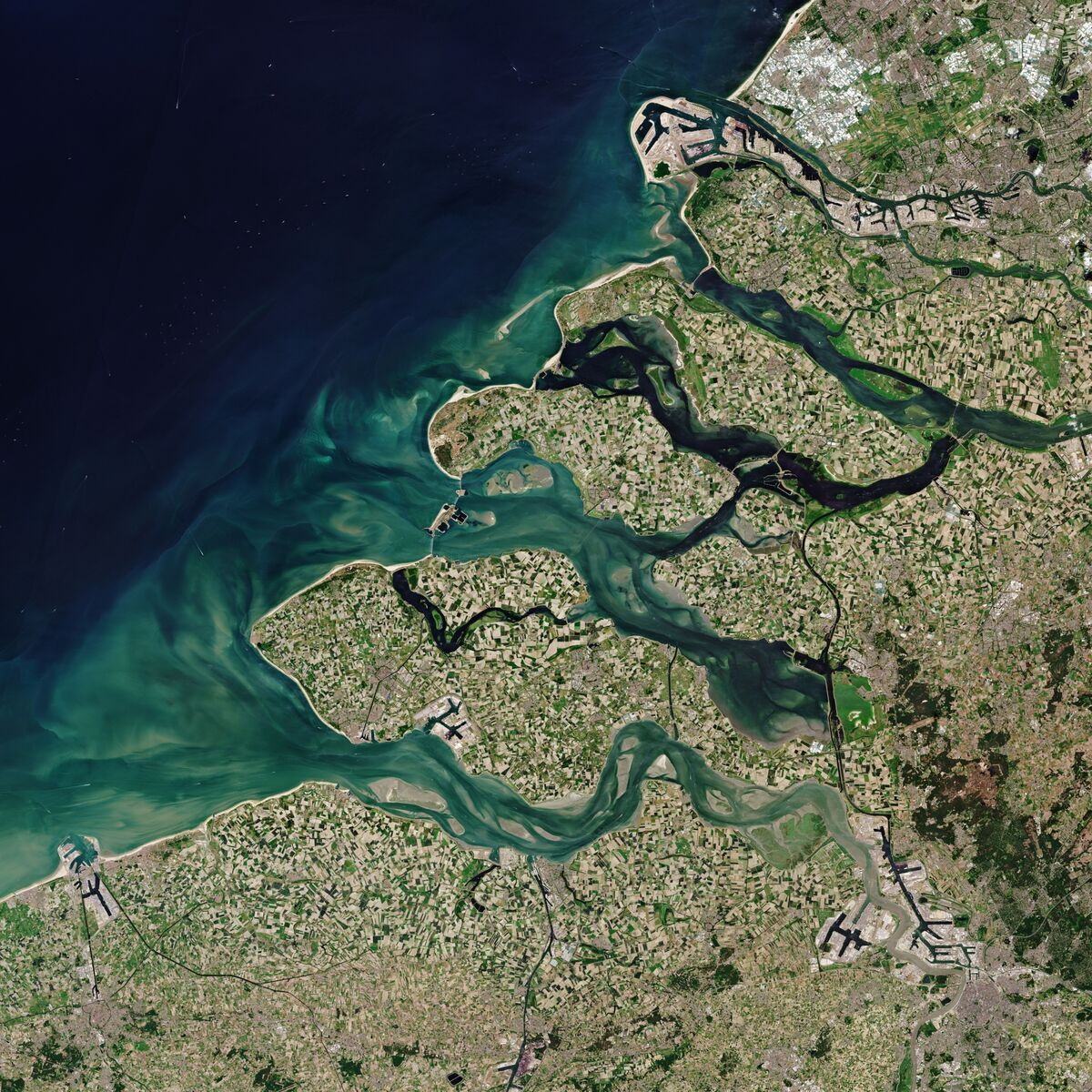
An image from the May 20 Sentinel-2 satellite shows the Dutch province of Zeeland, including the Port of Rotterdam, Europe’s largest seaport in the upper right corner. Much of the region is below sea level and depends on an intricate system of dikes, canals and dams to survive.
Credit: European Space Agency
Credit: European Space Agency
Climate change is causing oceans to rise faster than scientists’ most pessimistic predictions, resulting in risks of previous flooding for coastal economies already struggling to adapt.
The revised estimates published Tuesday in Ocean Science impact the two-fifths of the Earth’s population living near the coast. A trillion dollar property insured can face an even greater danger of floods, storms and tides. The research suggests that countries will have to control their greenhouse gas emissions even more than expected to keep sea levels under control.
Explore dynamic updates from Earth’s top data points
“This means that our carbon budget is even more exhausted,” said Aslak Grinsted, a geophysicist at the University of Copenhagen who is a co-author of the research. Economies need to cut an additional 200 billion metric tons of carbon – the equivalent of about five years of global emissions – to stay within the limits set by previous forecasts, he said.

The hotter it gets, the faster the sea level rises. The sensitivity models of the future appear to be inconsistent with historical data.
Credit: Aslak Grinsted
The researchers based themselves on the models of the United Nations Intergovernmental Panel on Climate Change, many of which consider only the last 150 years, incorporating data that go back several centuries. The new observations show that about half a meter of sea level rise by the end of the century can now be expected with just a 0.5 degree Celsius rise in temperatures. The oceans can rise more than 1 meter at 2 degrees Celsius, a trajectory that will be easily overcome under the current climate policies.
“The models on which we base our predictions of rising sea levels today are not sensitive enough,” said Grinsted. “To be more clear, they don’t hit the target when we compare them to the rate of sea level rise that we see when comparing future scenarios with observations going back in time.”
The findings follow last month’s warning that rising temperatures have melted 28 trillion metric tons of ice – equivalent to a 100-meter-thick layer of ice covering the entire UK – making worst-case scenarios more likely. The new methodology for tracking sea level change can help insurers, real estate developers and city planners to build tidal defense systems.
“The scenarios we see now with respect to rising sea levels are very conservative – the sea seems, using our method, to rise more than is believed using the current method,” said Grinsted, adding that his team at the Niels Bohr Institute is contact the IPCC about incorporating its results in the sixth year ahead Evaluation report.
